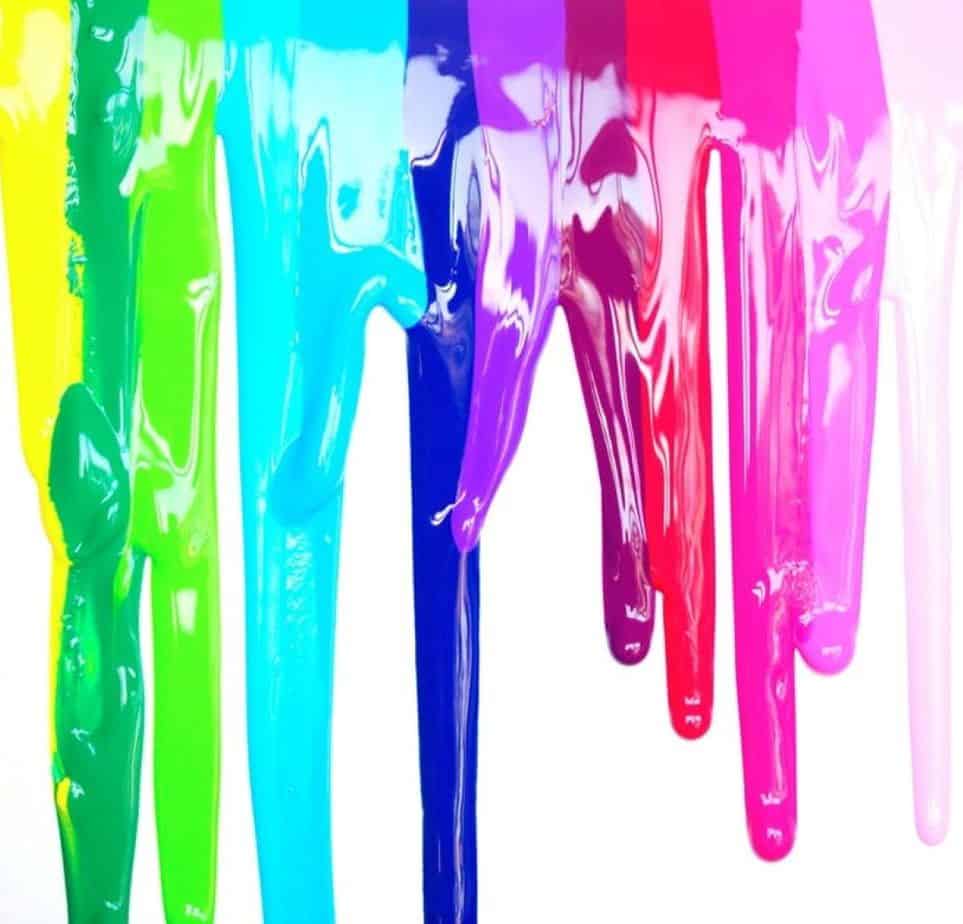Airbrush flow improver, otherwise known as flow aid is a paint viscosity manipulation product designed to break surface tension, lubricate the paint and allow for better spray and usability with an airbrush.
Airbrush flow improvers is commonly made up of compounds that decrease surface tension, known as surfactants. Flow improvers can also be laced with retarders that slow down the dry time of the paint to decrease tip dry and reduce the possibility of the paint drying before touching the surface, resulting in paint depositing on the surface in a powder form.
Given the main intent of flow improver is to break surface tension. This means, in theory, you can get away with spraying a slightly more viscous paint then you would usually airbrush at the same pressure. Due to less surface tension between the inner wall of the airbrush and the paint.
What Is Airbrush Flow Improver Made Of?
To give you as correct information as possible, I dug up the SDS sheet (Safety Data Sheet) on multiple airbrush flow aid products to see what compounds were being used, and for what intent.
I came to the following conclusion,
Many airbrush flow improver products include 2-butoxyethanol, propylene glycol and/or other surfactants to break surface tension. Many speculate that they are also laced with a retarder to slow dry time and minimize tip dry.
I believe both, 2-butoxyethanol and/or Propylene glycol are used in flow improvers / flow aids for their surfactant properties.
That being said,
Some speculate that the flow aids available on the market are diluted at 90% or greater with distilled water. This means 10% or less is containing the beneficial compound, In theory. Keep in mind this little detail is only speculation. Given safety data sheets don’t include all ingredients and ratios, only those they are required to report.
Do I Need A Flow Improver For Airbrushing?
Given the intent behind a flow improver is to decrease surface tension, which in turn, increases fluidity.
Consider adding a flow improver to your paint shelf. As the benefit provides the ability to spray slightly thicker paint viscosity due to less surface tension.
But only consider this, after you have confirmed the thinner your currently using does not already have surfactant compounds laced within it.
If so, you likely don’t even need to consider using a flow aid, as it’s essentially already ingrained into the reducer.
My suggestion,
Do some research on the current airbrush thinner you’re using. Dig up the Safety Data Sheet and see for yourself the ingredients that are being used, and if any relate to a decrease in surface tension or decreased dry time.
Airbrush Flow Improver vs Thinner
The Difference Between Airbrush Thinner And Flow Improver,
Airbrush paint thinner aims to reduce paint viscosity, whereas flow improver or flow aids aim to reduce surface tension and dry time to help reduce tip dry.
There is a difference between viscosity and surface tension. Take water for example, though it is highly fluid, it still has surface tension. This is why, when you drip water on a flat surface it holds a dome shape rather then disperses flat with the surface.
Though I’ve seen both sold separately. I would assume the majority of airbrush paint manufacturers would include some sort of surfactant compound in their thinners / reducers to aid with surface tension, as there are only a few companies I’ve come across that produce a specific flow aid product aside from their reducers, most just provide a reducer for their paint.
But this will require further research to know for certain…
I hope you were able to find some value here! If you have any further questions regarding the airbrush do be sure to take a look around the website. Airbrush Insider is dedicated to helping all in the airbrush community!
This is Colt signing off!
Check Out Some Of My Favorite Airbrush Equipment:
- My Favorite Airbrush To Date!
- The Air Compressor I Currently Use, And Why I’m Never Going Back To A Traditional “Airbrush Compressor”!
- My All Time Favorite Airbrush Paint’s For Ease Of Use & Versatility!
Next Recommended Resources:

